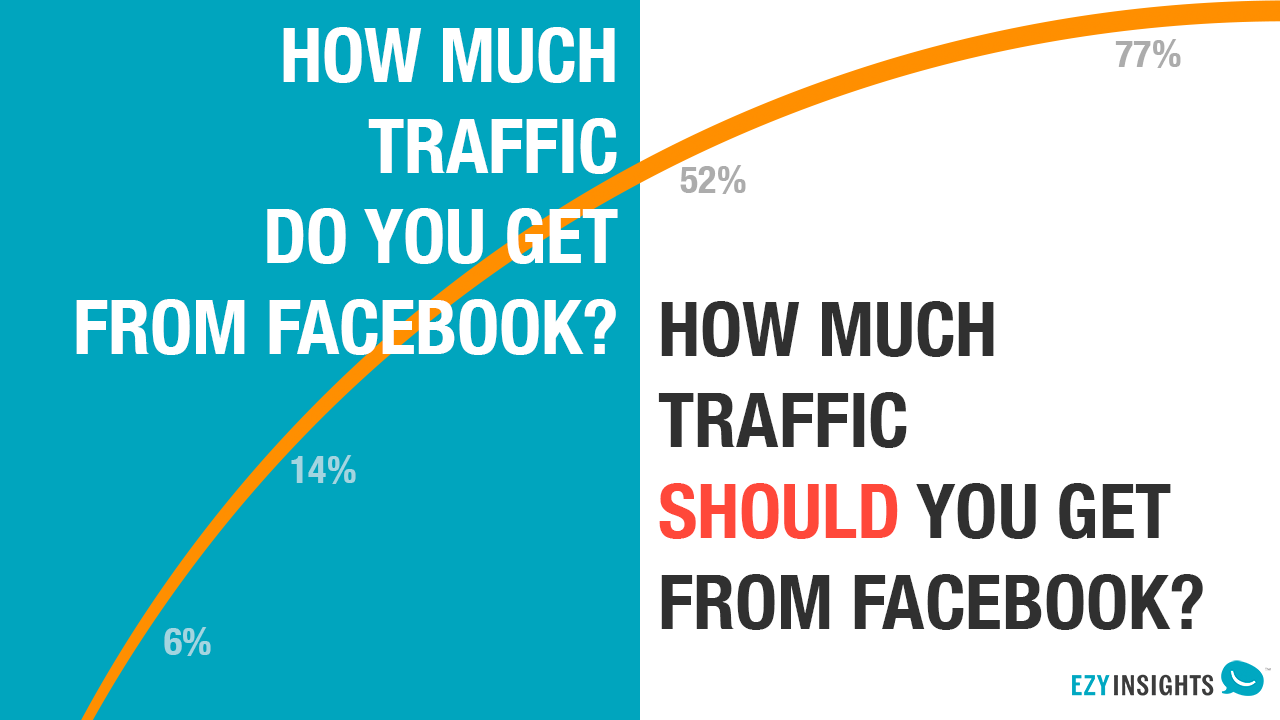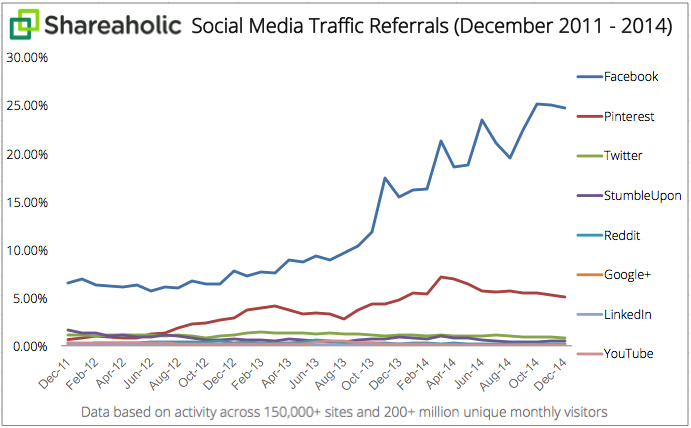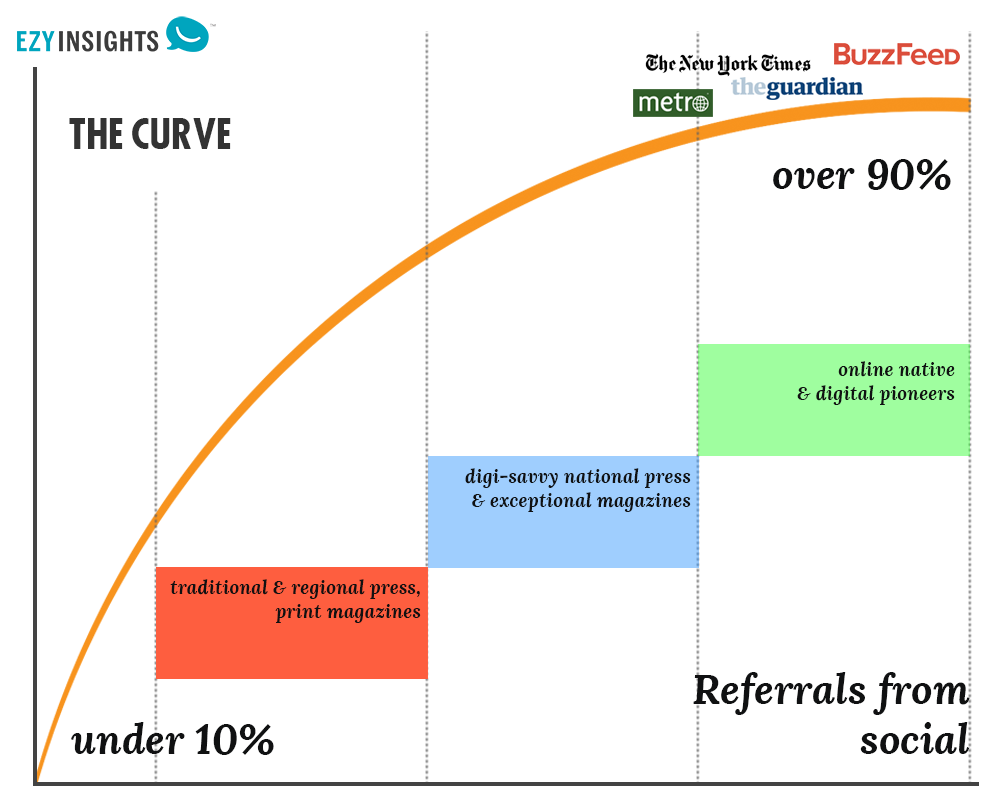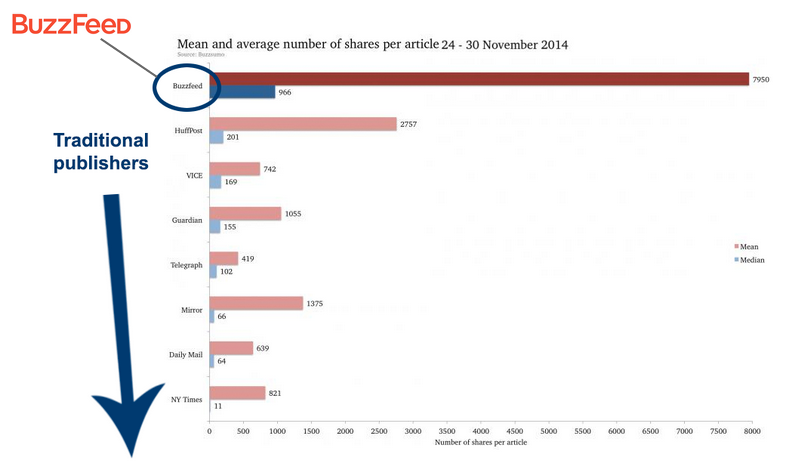 When I talk to different online publishers, one of the questions I often ask is what percentage of their web traffic comes from social. And if you know me you know that when I say social I mean Facebook, which trounces every other platform in terms of referrals to mainstream and general news, Facebook dominates.
When I talk to different online publishers, one of the questions I often ask is what percentage of their web traffic comes from social. And if you know me you know that when I say social I mean Facebook, which trounces every other platform in terms of referrals to mainstream and general news, Facebook dominates.

So I ask that question, and it’s a question that I think in an ideal world, every single employee of every publishing house should be able to answer without even thinking (never let it be said I am not hopeful). The answers I receive range from apologetic shrugs to immediate, accurate answers – and everything in between. The publishers that do tend to know what percentage of their traffic comes from Facebook are the ones for whom that number is a significant percentage. Likewise, when that percentage is going to be only a small amount of their overall traffic – it’s much less likely the employees are aware of the correct answer.
So it brings us to what I call ‘The Curve’, which is a visualisation of whereabouts any given publisher is compared to another in terms of FB referral percentage. In my own mind it looks something like this:
The chart shows all the different places publishers may inhabit along the social media referral curve, from the ludicrously high percentages of the most digitally focused like Buzzfeed to those traditional print houses way behind. The big names seen on that illustration are always the ones that crop up when it comes to digital discussions, but this is not representative of the whole media/publishing industry. It is important to remember that Buzzfeed, Huffington Post etc, have managed to successfully tap into using Facebook’s potential, sometimes even with such success that Facebook have had to change the rules of the game.
That chart shows just how dominant Buzzfeed is when it comes to getting users to share stories. For a time they dominated Facebook feeds, which despite seeming like a win, is not good long-term for Facebook, FB users or Buzzfeed. Facebook knows that over-saturation of content from a single publisher is a problem in individuals’ news feeds, so the newsfeed algorithm was tweaked to accommodate the huge numbers of shares Buzzfeed was generating. We saw the same thing happen shortly after FB started heavily favouring and pushing native video on the platform.
But what does a regional publisher in the middle of the country, whose social referrals are in single figures have in common with any of the big publications mentioned? They don’t report the same news, they don’t want to push popular viral content onto their readers, they do want to reach their readers but often aren’t sure how.
The main thing that ties all publishers together, regardless of size, is that their audiences are getting news more and more from Facebook. The way people use Facebook is changing – and if individual publishers aren’t visible there, then they will lose out. Facebook has become the dominant news-serving platform online. This is not a guess or a prediction, this is happening and has been happening for some time.

I’ve included one of our clients, Metro Sweden on illustration of the curve, as they are a great example of a publisher starting from almost the beginning (albeit with content and journalists) and being able to grow rapidly by leveraging Facebook in the right way. Metro’s Head of Social, Pontus Tengby is blunt about publishers that don’t take Facebook seriously or don’t consider it integral to their strategy:
“I think they are living in denial. [For us] it is incredibly important as 70% of our traffic comes from Facebook.”
If we want contrast, then it’s easy to locate a small regional publisher in any European territory that has a relatively small Facebook presence. Some of them haven’t moved into the digital era beyond uploading a PDF of their paper every week. For these, it can be difficult to see how stories about the changing publishing industry affects them, when these articles so often focus on the frontrunners. Yet a company moving from 7% up to 8% of their referrals coming from FB is just as important as a publisher going from 59% to 60%. It shows they are moving in the right direction, no matter how incrementally small the steps seem right now.
As audiences online are increasingly slippery, all publishers face something of a Hobson’s choice. Do they try to ignore the spectre of Facebook (and continue along obliviously as many are doing) until they slowly die, or do they try to move up the curve? Even then, increasing your Facebook referral percentage is no guarantee of success. Progress can be necessary to simply stay in the same place in terms of overall traffic. An essential yet perhaps demotivating task – “Hey guys, I’ve worked hard all year and I’m exactly at square one!”
The point of the curve is to be aware of it and your position along it relative to others. Is it where you want to be or should more resources be allocated to increasing social referral percentage? These decisions can only be made after appraising the current situation.
To move up, publishers need to drop mystical beliefs about Facebook based on advice they were told a couple of years ago, “only post 4 times a day”, “Never post the same thing twice” and start basing decisions on facts and stats. Shifting into this data driven mindset poses a big challenge for many traditional publishers who aren’t used to having realtime stats available 24/7. Changing established behaviour is difficult and slow, but 100% necessary.

